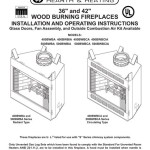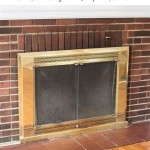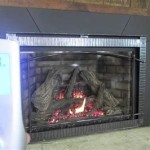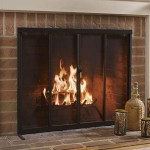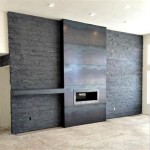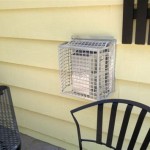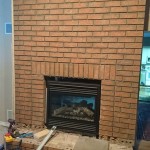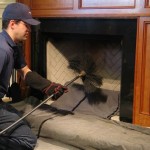Fireplace Flue Size Chart
A fireplace flue is a vital component of any fireplace, serving as the pathway for smoke and combustion gases to safely exit your home. The flue's size plays a crucial role in ensuring proper draft and efficient operation of your fireplace. An undersized flue can lead to smoke backdraft, creosote buildup, and even fire hazards. Conversely, an oversized flue can result in poor draft and inefficient burning. Understanding the proper flue size for your fireplace is essential for maintaining a safe and effective heating system.
Determining the Appropriate Flue Size
The ideal flue size for your fireplace is determined by several factors, including:
- Fireplace Size: The size of your fireplace opening and hearth directly influences the amount of smoke and combustion gases produced. Larger fireplaces require larger flues to accommodate the increased volume of exhaust.
- Fireplace Type: Different fireplace designs, such as wood-burning, gas, or pellet-burning, have varying heat outputs and exhaust characteristics. Gas fireplaces, for instance, typically produce less smoke than traditional wood-burning fireplaces, thus requiring smaller flues.
- Fuel Type: The type of fuel you burn in your fireplace also affects the ideal flue size. Wood produces more smoke and creosote than gas or pellets, necessitating a larger flue.
- Flue Material: The material used for the flue can also affect the required size. Clay tile flues, for example, tend to have a larger inside diameter than metal flues due to their thickness.
- Flue Length: The length of the flue also plays a role in determining the necessary size. Longer flues require larger diameters to prevent excessive friction and ensure proper draft.
It is strongly recommended to consult with a qualified chimney sweep or fireplace professional to determine the correct flue size for your specific fireplace. They can assess the factors mentioned above and provide tailored recommendations for your unique situation.
Fireplace Flue Size Chart
While a professional assessment is crucial, understanding general flue size guidelines can be helpful. The table below provides a simplified guide to common fireplace types and their corresponding flue sizes:
| Fireplace Type | Flue Size (inches) | |---|---| | Wood-burning fireplace (up to 20,000 BTU) | 6-8 | | Wood-burning fireplace (over 20,000 BTU) | 8-10 | | Gas fireplace (up to 40,000 BTU) | 4-6 | | Gas fireplace (over 40,000 BTU) | 6-8 | | Pellet stove | 4-6 |It's important to note that these are general guidelines and may not be applicable to all situations. The actual required flue size can vary depending on the factors discussed earlier. Always consult with a professional for accurate recommendations.
Importance of Proper Flue Size
Maintaining the correct flue size for your fireplace is paramount for safety and performance. Here are some key benefits:
- Improved Draft: A properly sized flue ensures a strong draft, effectively drawing smoke and combustion gases out of your home.
- Reduced Creosote Buildup: Proper draft helps prevent creosote buildup, a highly flammable substance that can clog the flue and pose a fire hazard.
- Enhanced Heating Efficiency: A properly sized flue allows for efficient combustion, maximizing the heat output of your fireplace.
- Safer Operation: An oversized flue can result in a weak draft, leading to smoke backdraft and potentially hazardous conditions.
In conclusion, proper flue size is essential for a safe and efficient fireplace operation. Consulting with a professional to determine the appropriate size for your fireplace is highly recommended. By ensuring a properly sized flue, you can enjoy the warmth and ambiance of your fireplace with peace of mind.

Flue Area Masonry Fireplace Upcodes

Determining Fireplace Liner Sizing

Liner Sizing Help Chimney Depot

Liner Sizing Help Chimney Depot

Liner Sizing Help Chimney Depot

Determining Fireplace Liner Sizing

Chimney Liner Clay Flue Dimensions From Sandkuhl

Chimney Liners Usa Size A Fireplace Liner

Chimney Liner Clay Flue Dimensions From Sandkuhl

Chimney Offset Diagrams
Related Posts

